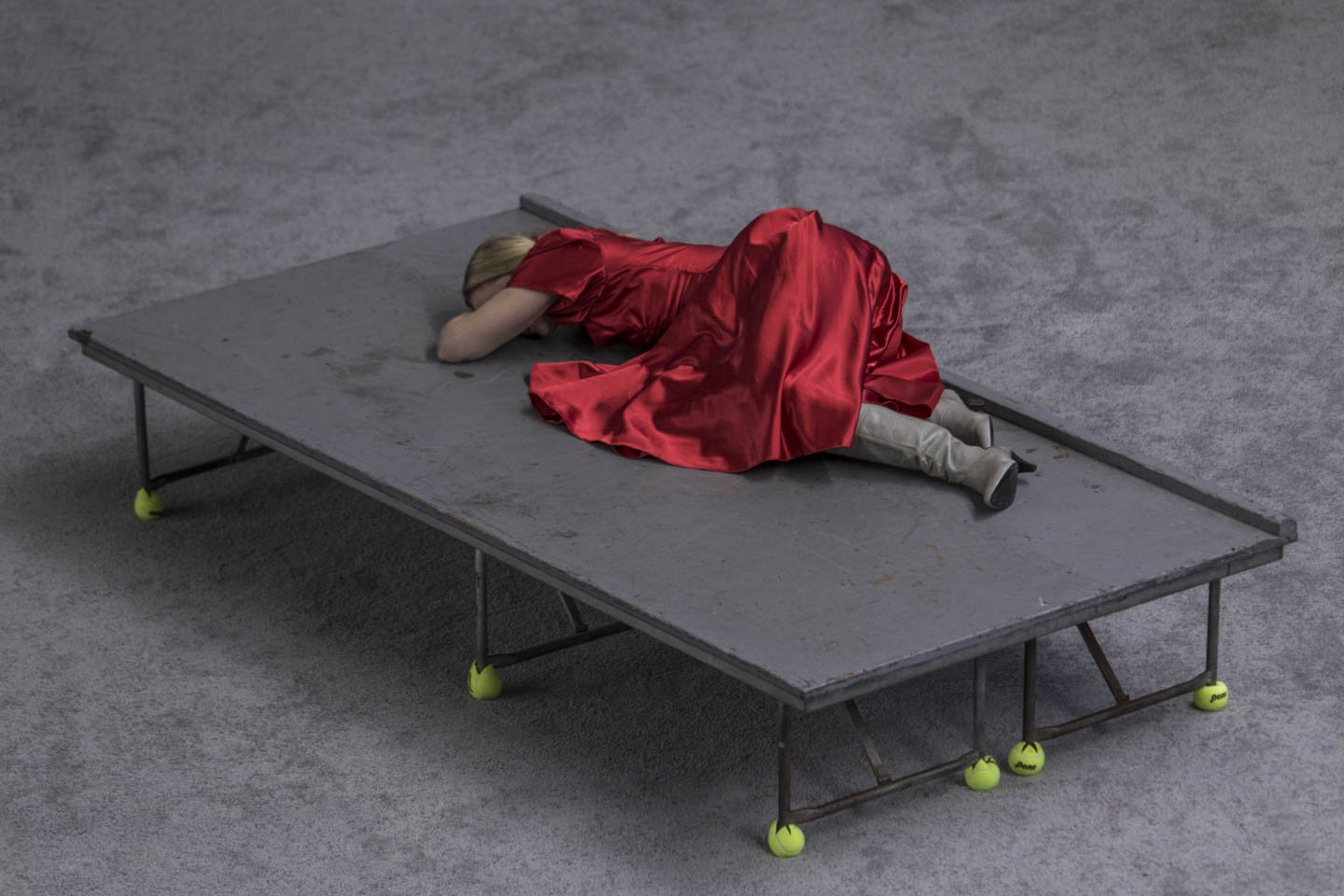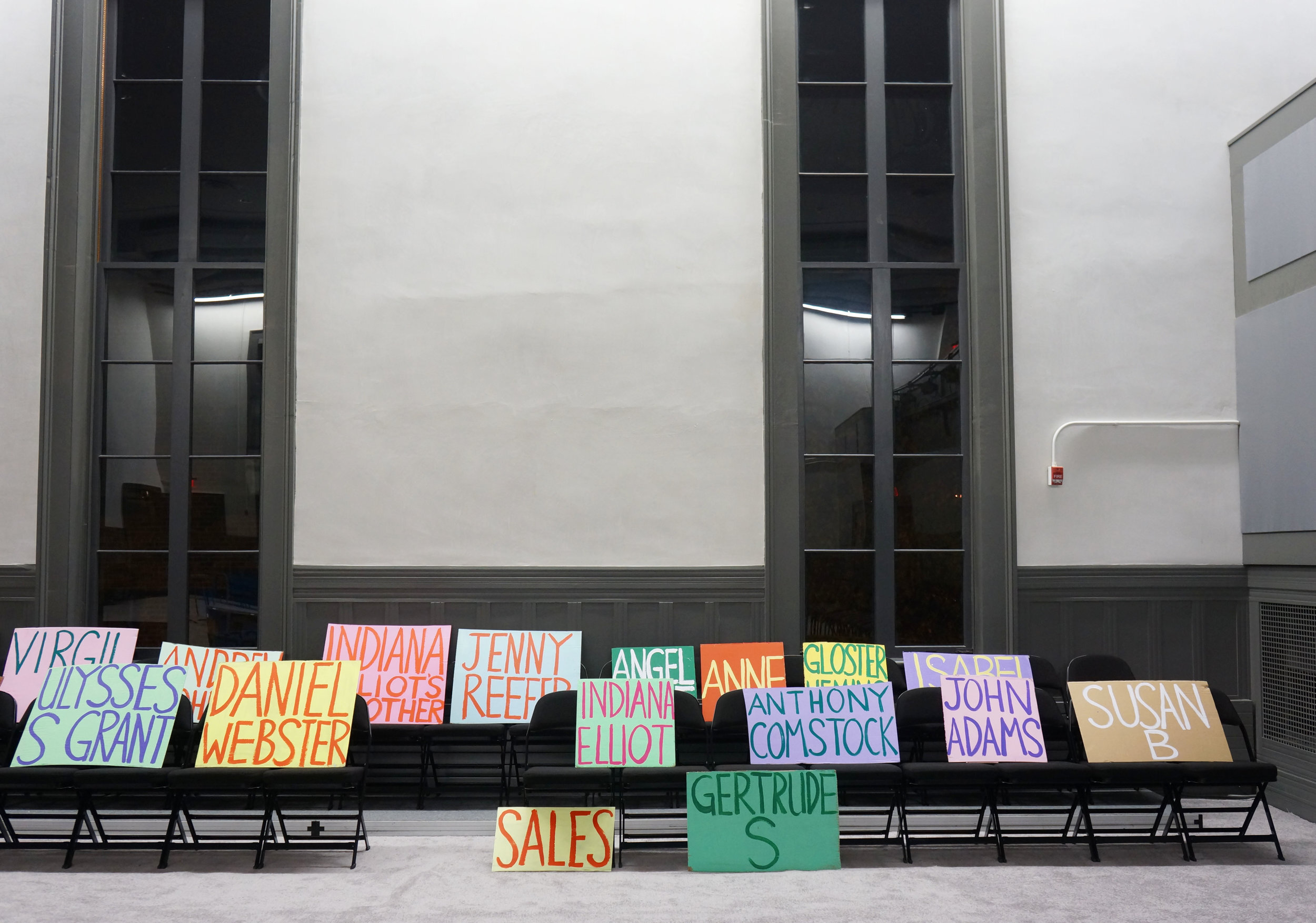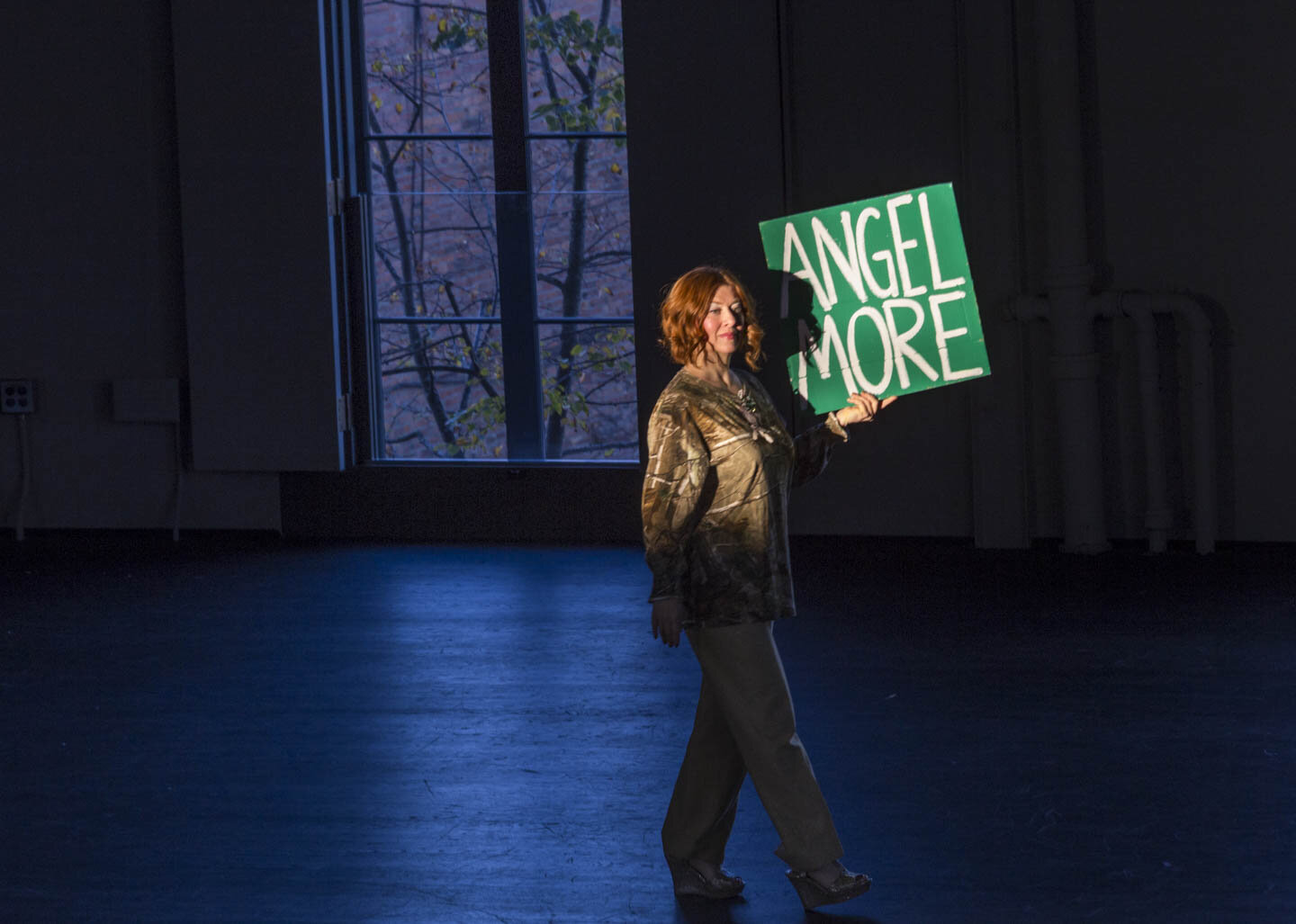
THE MOTHER OF US ALL
October 2017 \ Hudson Opera House, Hudson NY \ conceived, cast, directed by R. B. Schlather \ music director Tony Kieraldo \ musical preparation and arrangement David Sytkowski \ design Marsha Ginsberg \ costume assistant Ilir Ahmetaj \ hair and makeup Lily Scheff \ signs Ann Agee \ light JAX Messenger \ dramaturge Joan Retallack \ producing associate Daniel Stermer \ assistant director Michael Hoffmann \ photography Matthew Placek \ produced by Tambra Dillon \ production manager Sage Carter \ publicist Aleba Gartner \ collaborations With Lil’ Deb’s Oasis, Annie Bielski, Richard Kennedy, Shanekia Mcintosh, Elise Mcmahon, Tobin del Cuore and Tom Taylor
“A community-sourced, chronology-crossing staging by R. B. Schlather brought the performers among the audience in November at Hudson Hall in Hudson, N.Y., an intimate setting for the unforgettable exhaustion of Michaela Martens, whose Susan B. had both near-mythical stature and soccer-mom immediacy.”
— New York Times Best Performances 2017
“The daring young director R. B. Schlather.”
— New Yorker Magazine
“Finest operatic performance of the season.”
– Observer
“A heart-warming evening at the Hudson Opera House.”
— John Rockwell
“The revelatory production drives home that message in every way. The piece and its execution felt entirely fresh and contemporary”
— Wall Street Journal
“In R. B. Schlather’s quietly poignant production, performers walk, sit and stand among the audience, which sits around the perimeter and on the carpeted floor of Hudson Hall, an old gathering space where the real Anthony lectured. Not all those wonderfully vivid performers are professionals; some untrained voices and unpracticed bodies add to the sense that “The Mother of Us All,” for all its sophisticated stylization, is the story of all of us, today as before. The costumes are an explosion of cross-chronological thrift-store kitsch, faded Disney T-shirts meeting tight Victorian coifs, on endless procession around this Anyhall, U.S.A., the crisp late-afternoon autumn light filling it, then gradually dimming.”
— New York Times
BEST PERFORMANCES 2017 — NEW YORK TIMES
BEST PERFORMANCES 2017 — WQXR

































